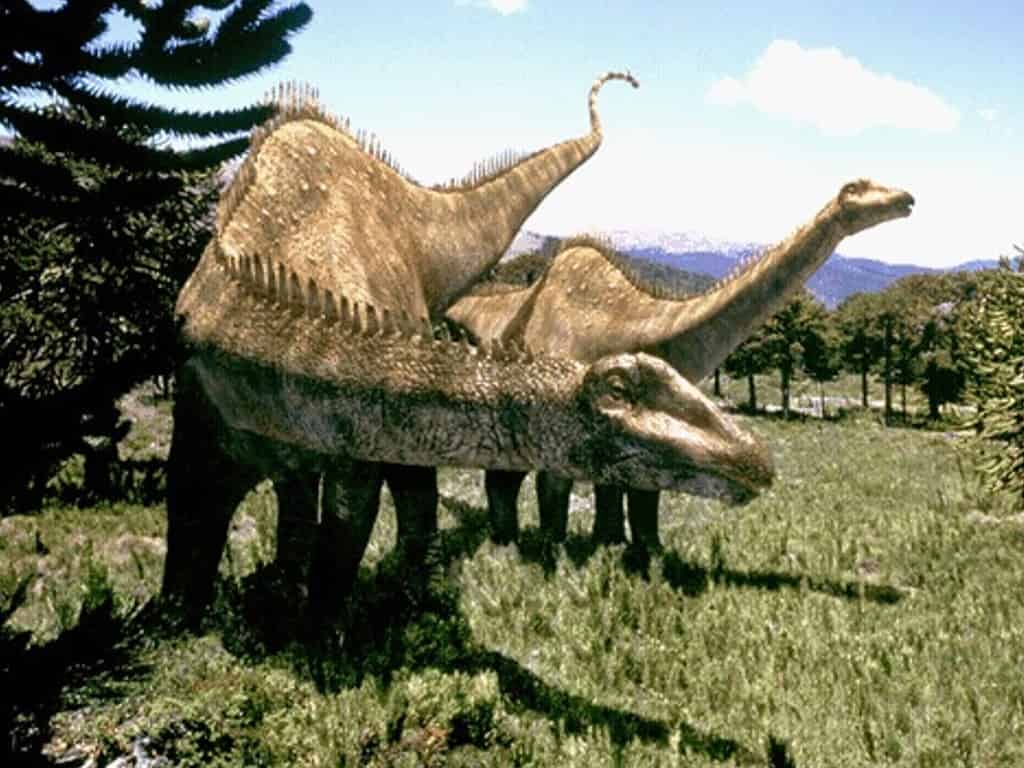Let’s take a long walk with an even looonger dinosaur. The Diplodocus (pronounced di + PLOD + uh + kuhs) is a Late Jurassic sauropod and one of the most iconic dinosaurs to have ever lived. This behemoth was one of the most successful species that lived 155 to 145 million years ago. It could reach up to 26 meters in length, 8 meters in height, and weigh up to 30 tons. From the fossil quarry to the silver screen, this article aims to shed some light on this famous dinosaur’s life.

Discovery and Naming. Why Diplodocus?
The saga of Diplodocus begins in Colorado, where its fossils were first discovered in 1877 by Samuel Wendell Williston. The initial discovery took place in the rich fossil beds of the Morrison Formation. A year later, in 1878, Othniel Charles Marsh, a prominent paleontologist of his time, gave the dinosaur its name, Diplodocus.
The name is derived from the Greek words διπλός (diplos), meaning “double,” and δοκός (dokos), meaning “beam”. This name was inspired by the dinosaur’s distinctive tail vertebrae, which featured a unique double-beamed structure. This structure is believed to have a unique function, perhaps related to balance, defense, or communication.
The name and the dinosaur itself were emblematic of the so-called Bone Wars, a period of intense and competitive fossil hunting and naming between Marsh and his rival, Edward Drinker Cope. These rivalries not only fueled the discovery of numerous new dinosaur species but also significantly advanced the field of paleontology. Diplodocus, with its peculiar name and impressive size, quickly became a symbol of this golden age of discovery.

Physical Description of Diplodocus

Diplodocus is a prime example of the sauropod genus, a group recognized by their enormous size, long necks and tails, and quadrupedal stance. The most striking feature of Diplodocus is undoubtedly its immense length, primarily attributed to its elongated neck and tail. It was one of the largest dinosaurs to ever walk the Earth.
Diplodocus carnegii, one of the best-known species in the genus, reached lengths of 24 to 26 meters, making it one of the longest dinosaurs known from a complete skeleton. Its tail, composed of about 80 caudal vertebrae, was exceptionally long and whip-like, used potentially for defense or even communication. In contrast to its sprawling tail and neck, the body of Diplodocus was relatively compact, supported by four sturdy legs. The front limbs were slightly shorter than the hind. Scientists have likened this posture and skeletal structure to a suspension bridge, designed for providing strength and flexibility.
While more than a hundred Diplodocus specimens have been discovered, their skulls are much rarer, with fewer than a dozen having been dug up to date. However, no skull found thus far can be attributed to Diplodocus with 100% certainty. Diplodocus‘ head was small in proportion to its body, with a narrow, elongated skull. Its teeth, peg-like and only present in the front of the jaw, were adapted for stripping foliage. The wear patterns on the teeth support this feeding strategy, suggesting Diplodocus employed a method of unilateral branch stripping. The skin of Diplodocus, known from fossilized impressions, featured a variety of scale shapes and sizes, suggesting a complex integumentary system.

Habitat and Lifestyle of Diplodocus
Diplodocus inhabited the vast floodplains of what is now mid-western North America, in the Late Jurassic period. Geological evidence from the Morrison Formation suggests an environment dotted by river channels, wetlands, and floodplains interspersed with coniferous forests. Diplodocus was likely a common presence, sharing the landscape with other sauropods such as Apatosaurus, Barosaurus, Brachiosaurus, and Camarasaurus.
The climate of the Morrison Formation, inferred from the sedimentology and fossil plant life, was semi-arid with strong seasonal precipitation. This environment supported a diverse flora, including ferns, cycads, and conifers, which provided the primary food resources for Diplodocus and its contemporaries. The animal’s adaptive features, such as its long neck, allowed it to exploit a variety of plant foods, from ground-level ferns to higher-growing gymnosperms.
Diplodocus would have been pressured by large theropod predators, such as Allosaurus and Ceratosaurus. However, its sheer size may have served as a deterrent to all but the most determined or desperate of predators. The social behavior of Diplodocus remains a subject of scientific speculation, with some evidence suggesting that, like many modern herbivores, they might have formed herds for feeding and protection.
Diplodocus in Popular Culture
Diplodocus has not only captured the attention of paleontologists but has also found a prominent place in popular culture. One of the most iconic representations of Diplodocus is “Dippy,” a replica that has graced the halls of the Natural History Museum in London since the early 20th century. First donated by Andrew Carnegie, replicas of Dippy have been displayed in prestigious institutions across the world. This gesture of international goodwill not only popularized Diplodocus but also sparked public interest in dinosaurs and paleontology, making it one of the most recognized dinosaur species.
In addition to museum exhibits, Diplodocus has been a staple of dinosaur-related content in various media forms. It has appeared in numerous documentaries. The BBC’s “Walking with Dinosaurs” featured it in the wild, showcasing the latest scientific understanding of its behavior and environment.

Recent Discoveries and Research
Advancements in imaging techniques and 3D modeling have allowed scientists to delve deeper into the anatomy and physiology of Diplodocus. Digital reconstructions of Diplodocus skeletons have provided a more accurate understanding of their posture, movement, and interaction with their environment.
Bone histology analysis of Diplodocus skeletons revealed that these dinosaurs grew at an astonishing pace. They could have reached their enormous sizes in just a few decades. This rapid growth suggests that juveniles would have had to consume vast quantities of vegetation to fuel their development.
Furthermore, the discovery of new Diplodocus specimens, including more complete skeletons and rare finds of skin impressions, has provided invaluable data on the physical appearance and lifestyle of these dinosaurs. These finds have helped paleontologists to reconstruct the appearance of Diplodocus with greater accuracy.










